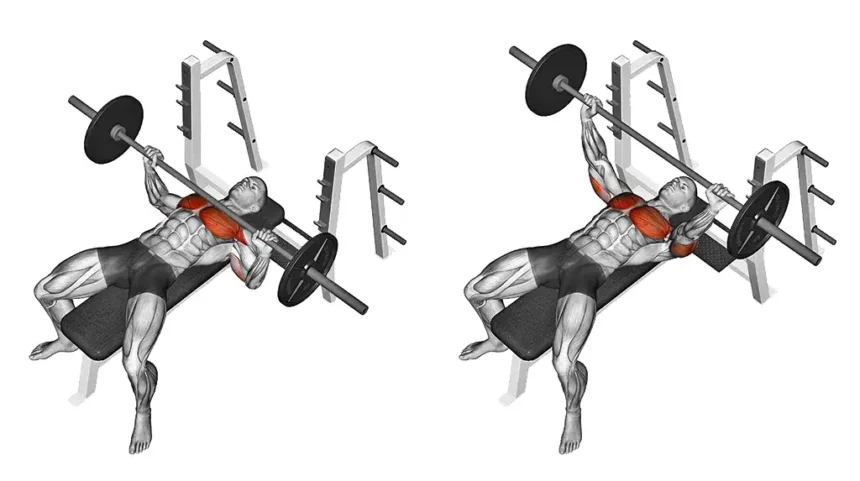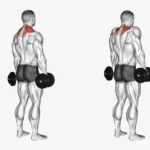Barbell Bench Press: Exercise Overview
The barbell bench press is a cornerstone strength exercise celebrated across fitness disciplines, from bodybuilding to powerlifting. It’s a fundamental movement for developing upper-body strength, particularly targeting the pectoralis major (chest), with secondary engagement of the triceps, anterior deltoids, and other stabilizing muscles. For powerlifters, it’s one of the “big three” lifts alongside the squat and deadlift, serving as a key measure of pressing strength. Athletes use it to gauge potential for on-field performance, while bodybuilders rely on it as a compound movement to sculpt a balanced, muscular upper body (Schoenfeld, 2010). Variations exist to accommodate different body types or injury concerns, ensuring everyone can train this essential movement safely. The barbell bench press is versatile and can be included in chest workouts, push routines, upper-body sessions, or full-body programs.
Variations
- Incline Barbell Bench Press
- Decline Barbell Bench Press
- Dumbbell Bench Press (Flat, Incline, or Decline)
- Smith Machine Bench Press
How to Perform the Barbell Bench Press
- Lie flat on a bench, positioning your eyes directly under the barbell. Grip the bar just outside shoulder-width with a full grip (thumbs wrapped around).
- Retract and pinch your shoulder blades together, pressing them into the bench to create a stable base.
- Unrack the bar (with a spotter’s help if needed) by straightening your arms, keeping your upper back tight.
- Inhale deeply and lower the bar slowly by bending your elbows, aiming for the base of your sternum or slightly below, depending on your arm length.
- Lightly touch the bar to your chest, then press it back up in a straight line by driving your feet into the floor for leg drive and extending your elbows.
- Exhale at the top and repeat for the desired number of repetitions.
Tips for Optimal Performance
- Use a Spotter: Especially for heavier lifts, a spotter ensures safety and helps maintain upper-back tightness during the unrack.
- Prioritize Technique: Focus on form over heavy weights to prevent injury and maximize muscle engagement (McGill, 2010).
- Maintain a Linear Bar Path: Keep the bar aligned with your wrists and elbows, positioning it low in your palm to avoid wrist extension.
- Control the Descent: Lower the bar slowly to enhance muscle tension and ensure the chest and triceps do the work (Schoenfeld, 2016).
- Use Leg Drive: Press your feet into the floor and engage your glutes to stabilize your pelvis and boost pressing power.
- Keep Shoulders Retracted: Maintain pinched shoulder blades throughout to protect your shoulders and enhance stability.
- Avoid Bouncing the Bar: Touch the chest lightly with each rep, avoiding momentum to maintain control and maximize effectiveness.
- Experiment with Grip Width: Longer arms may require a slightly wider grip, while shoulder discomfort may improve with a wider grip or reduced range of motion (e.g., floor press).
- Engage Stabilizers: Squeeze the bar tightly and imagine “bending” it to activate shoulder stabilizers, enhancing joint stability (Wirth et al., 2016).
- Adjust Foot Position: Test flat feet versus tucked toes to find the stance that optimizes leg drive and power output for you.
Powering up your chest with barbell presses? Dive into our Ultimate Guide to Muscle Groups for a full chest workout plan.








